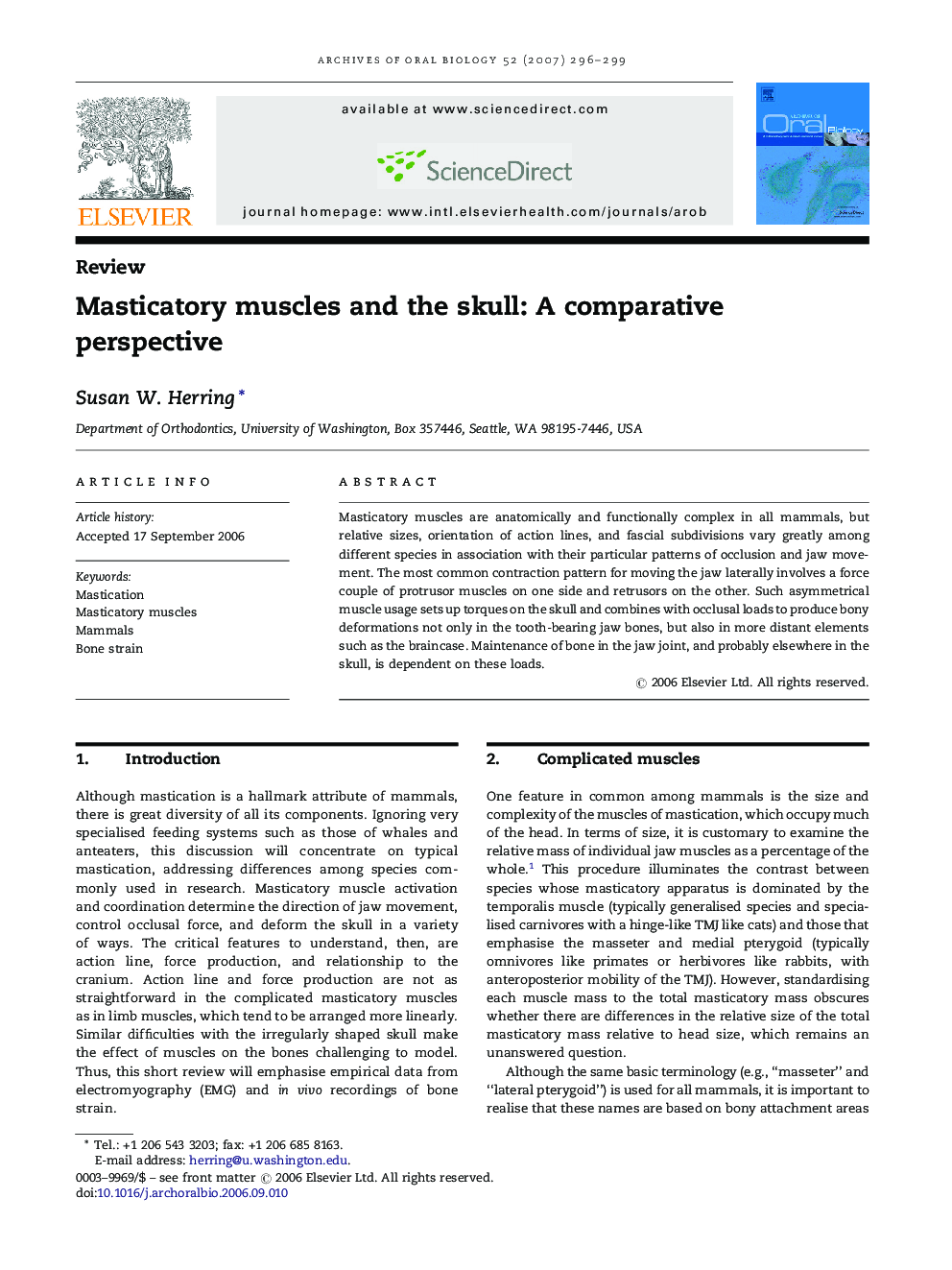| Article ID | Journal | Published Year | Pages | File Type |
|---|---|---|---|---|
| 3121947 | Archives of Oral Biology | 2007 | 4 Pages |
Abstract
Masticatory muscles are anatomically and functionally complex in all mammals, but relative sizes, orientation of action lines, and fascial subdivisions vary greatly among different species in association with their particular patterns of occlusion and jaw movement. The most common contraction pattern for moving the jaw laterally involves a force couple of protrusor muscles on one side and retrusors on the other. Such asymmetrical muscle usage sets up torques on the skull and combines with occlusal loads to produce bony deformations not only in the tooth-bearing jaw bones, but also in more distant elements such as the braincase. Maintenance of bone in the jaw joint, and probably elsewhere in the skull, is dependent on these loads.
Related Topics
Health Sciences
Medicine and Dentistry
Dentistry, Oral Surgery and Medicine
Authors
Susan W. Herring,
